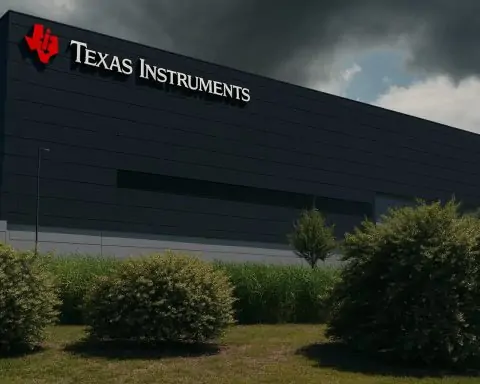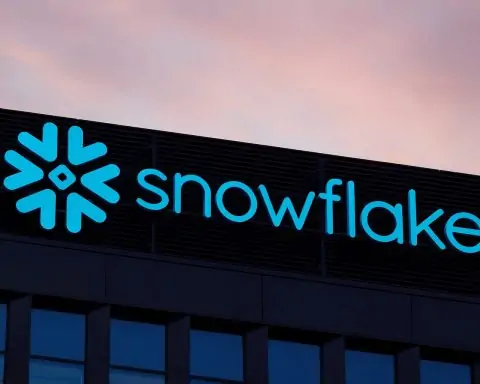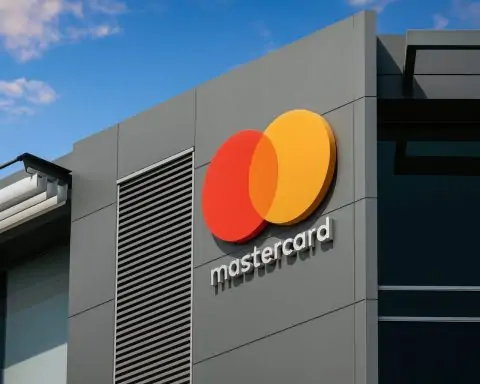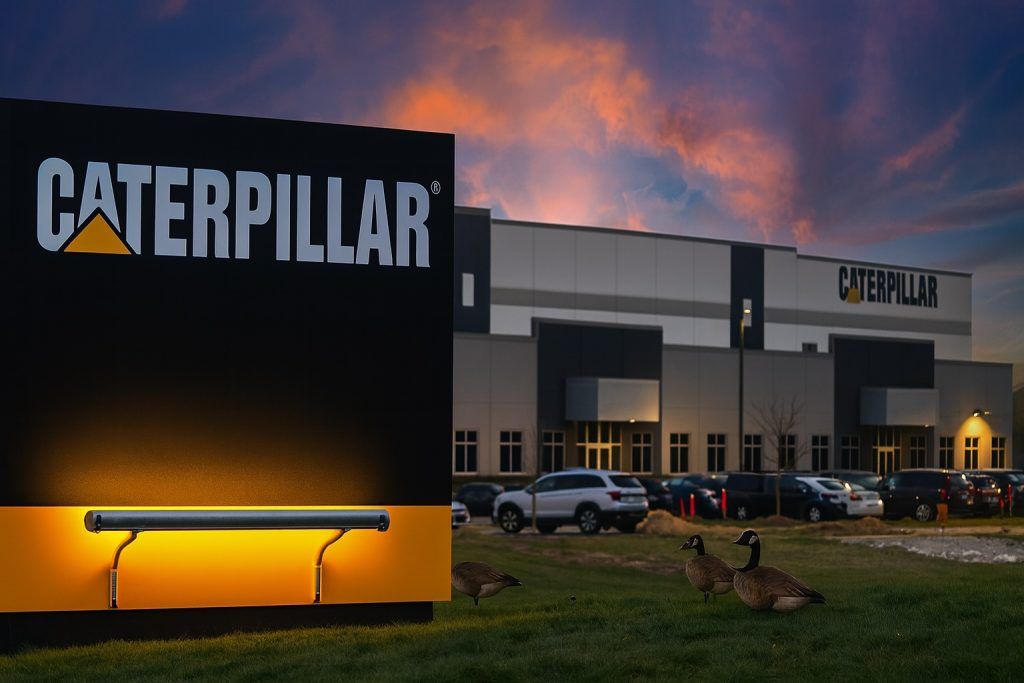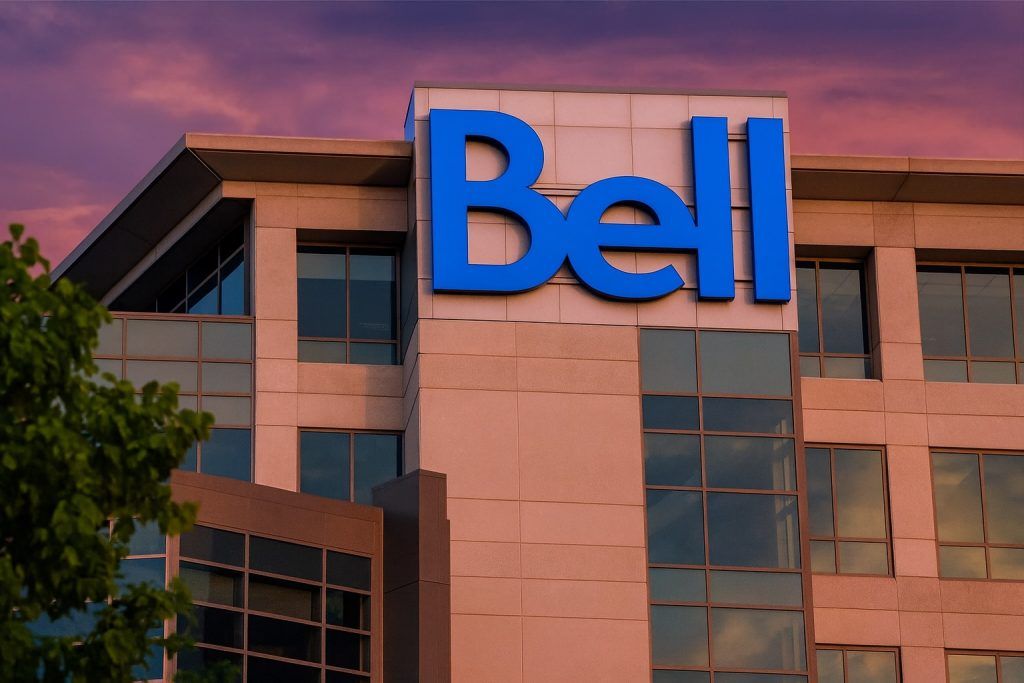- Merger Announcement: Urban-gro, Inc. – a Colorado-based design-build firm for indoor farms and cannabis facilities – signed a binding letter of intent on October 14, 2025, to merge with Flash Sports & Media, Inc. [1]. Flash’s shareholders would own about 90% of the combined company post-merger, and Urban-gro will be renamed Flash Sports & Media Holdings, Inc. [2].
- Stock Soars on News: Urban-gro’s stock ($UGRO) surged on the merger announcement, jumping as much as 60% intraday on Oct. 14 [3]. Shares traded around $0.59 by midday, up from a prior close of ~$0.37 (a 29% pre-market jump) [4]. Despite the spike, the penny stock remains below Nasdaq’s $1 minimum bid requirement [5].
- Nasdaq Listing in Jeopardy: The company received a Nasdaq delisting notice in late August for failing to maintain a $1 share price [6]. An appeal hearing was scheduled for Oct. 14, 2025 [7]. Urban-gro previously obtained an extension in early 2025 to regain compliance [8], but continued price weakness put its listing at risk again.
- Financial Struggles & Debt Settlement: Urban-gro has been unprofitable with a weak balance sheet, and defaulted on a $10 million credit line this year [9] [10]. In September, it settled a $1.49 million lawsuit from lender Gemini Finance by agreeing to issue common stock to satisfy the claim (with limits to prevent market flooding) [11]. The lender had already foreclosed on assets of Urban-gro’s construction subsidiary for $450,000 in a prior auction [12].
- Asset Sales to Refocus on Core Business: As part of a turnaround plan, Urban-gro is selling non-core divisions. It entered a deal to sell its traditional architecture subsidiary (2WR of Georgia) for about $2 million [13], after receiving a $500,000 deposit from buyer CM Capital [14]. CEO Bradley Nattrass said this move “reflects our continued focus on streamlining operations and aligning resources with our strategic growth priorities” as Urban-gro returns its emphasis to controlled-environment agriculture (CEA) [15].
- Analyst Sentiment & Targets: Only one Wall Street analyst currently covers UGRO, with a Buy rating and a $3.00 price target – a valuation nearly 5× the pre-merger stock price [16]. However, TipRanks’ AI-based “Spark” analyst rates UGRO Underperform, citing “negative profitability and [a] weak balance sheet” along with continued downward momentum and delisting risk [17]. The stock’s market capitalization is barely $5–6 million [18], underscoring its micro-cap status and high risk profile.
- Industry Headwinds: Urban-gro’s challenges mirror a broader slump in the cannabis cultivation and indoor farming industry. Falling cannabis prices and oversupply have sharply reduced demand for new grow facilities. Even industry leader Hydrofarm saw sales plunge 28% in Q2 2025, citing “significant industry headwinds” like cannabis oversupply and regulatory uncertainty [19]. Many high-profile indoor agriculture projects have failed, and the sector is viewed as “pretty risky these days” due to “over-saturation of the cannabis market” and costly high-tech operations [20].
- Major Contract Wins: Despite headwinds, Urban-gro has demonstrated an ability to win large projects. In early 2025, it signed a $24 million construction contract with a leading Midwestern cannabis MSO (multi-state operator) to build a new cultivation facility [21] – a positive signal that some operators are still investing in growth. Urban-gro expected to recognize revenue from that project by the end of 2025 [22].
Merger with Flash Sports & Media Sparks Stock Surge
Urban-gro’s announcement of a planned merger with Flash Sports & Media sent its battered stock soaring on October 14. The company revealed it signed a binding LOI to combine with Flash, a private sports-media firm, in what is effectively a reverse merger [23]. Under the proposal, Flash will be absorbed into new Urban-gro subsidiaries, and Flash’s shareholders will receive new Urban-gro shares (unregistered) equal to 19.99% of UGRO’s pre-merger common stock, plus a new series of preferred shares that convert to common upon shareholder approval [24] [25]. Once the dust settles, Flash’s owners would end up with roughly 90% of the post-merger company [26].
Crucially, Urban-gro will change its name to “Flash Sports & Media Holdings, Inc.” after the deal closes [27], signaling a dramatic shift away from its legacy identity. The board of directors will also flip: initially 4 of 5 board seats stay with Urban-gro’s designees, but after the preferred shares convert, Flash’s team will control 4 of 5 seats [28]. The merger agreement includes a 90-day exclusivity period, during which Urban-gro cannot entertain other offers [29]. Flash also agreed to pay a $200,000 cash deposit within 15 days as a show of commitment [30].
Investors reacted with euphoria at this lifeline for Urban-gro. In pre-market trading on Oct. 14, UGRO stock jumped about 29% [31]. After the opening bell, the rally intensified – shares briefly hit an intraday high of $0.78 (more than double the prior day’s close) before settling around the mid-$0.50s by early afternoon [32] [33]. By mid-day, Urban-gro was up roughly 59% at ~$0.59 per share [34], its largest single-day gain in recent memory. The huge volume and price spike suggest traders are speculating that the Flash deal could breathe new life into a company that has been on the ropes. Even after the pop, though, UGRO stock remains under one dollar – a far cry from its 52-week high near $1.92 and down massively from highs a couple years ago during the cannabis boom.
The merger news provides a narrative pivot for Urban-gro: if completed, the company will transition from being a pure-play controlled-environment agriculture (CEA) services firm into a diversified holding that includes Flash’s sports/media business. Exactly what Flash Sports & Media does has not been detailed publicly yet, but the name implies a focus on digital media or entertainment related to sports. For Urban-gro’s existing shareholders, the deal is highly dilutive – current owners would be left with only 10% of the combined entity after Flash’s preferred shares convert [35]. However, the hope is that the injection of Flash’s assets and business (and presumably any revenue streams it brings) could dramatically improve the prospects of the combined company. Urban-gro’s financial health has deteriorated (it sports a negative return on assets of –24% [36]), so essentially Flash is rescuing the firm by taking control. Investors appear to be betting that 10% of something bigger is better than 100% of a failing micro-cap.
Company leaders framed the merger as a strategic win. In an SEC filing, Urban-gro said the transaction represents a “strategic pivot” given its “weak financial health” and struggles in its core business [37]. If consummated, the merger will likely close in late 2025 or early 2026, pending negotiation of a definitive agreement and approvals. One open question is whether Urban-gro’s CEA segment (serving indoor farming and cannabis clients) will continue operating as a subsidiary of the new Flash Sports & Media Holdings, or if that business will be deemphasized or sold. The merger announcement did not explicitly say Urban-gro is exiting CEA, but the name change and Flash taking 90% ownership suggest the focus will shift. For now, Urban-gro said it will seek shareholder approval post-merger to convert Flash’s preferred stock to common, finalizing Flash’s control [38]. Shareholders will surely weigh the trade-offs: their stake is diluted, but the company avoids a potential bankruptcy or delisting by gaining a new venture with fresh capital (Flash’s $200K deposit is small but symbolic) and a new industry direction.
Debt Woes, Asset Sales, and Delisting Threat Spur Strategic Shift
The dramatic merger move did not come out of the blue – it follows a series of financial crises and strategic maneuvers by Urban-gro in recent months. The company’s troubles mounted through 2024 and 2025 as the cannabis industry downturn intensified. Urban-gro, which provides design, engineering, and construction services for indoor cultivation facilities, found itself with shrinking project backlogs, heavy losses, and debt obligations it could not meet. By mid-2025, the firm’s stock had sunk into penny-stock territory, triggering warnings from Nasdaq.
On August 28, 2025, Urban-gro received a formal Nasdaq delisting determination letter due to its share price trading below $1 for over 30 consecutive business days [39]. Initially, a delisting hearing was set for Oct. 7, but it was rescheduled to October 14, 2025 – coincidentally the same day the Flash merger LOI was announced [40]. At the hearing (held with Nasdaq’s Listing Qualifications panel), Urban-gro’s management presumably presented a plan to regain compliance, which likely included the merger and other restructuring steps. The outcome of the hearing has not been officially disclosed yet, but Nasdaq could decide to grant an extension or require additional actions (often a reverse stock split is mandated to boost the price above $1). In early 2025, Nasdaq had already granted Urban-gro an extension to meet listing requirements [41], suggesting the exchange may be running out of patience. If Nasdaq is unconvinced of Urban-gro’s recovery plan, the stock could be delisted to the OTC markets – a fate the company is scrambling to avoid as it would further dry up liquidity and investor interest.
Financially, Urban-gro has been taking drastic steps to stabilize. One major issue was a $10 million secured credit facility extended to its construction division (UG Construction/Emerald Construction). The subsidiary defaulted on the loan, leading the lender, Gemini Finance, to initiate foreclosure proceedings [42]. On September 4, 2025, Gemini conducted a foreclosure sale of UG Construction’s assets, scooping them up for just $450,000 – a fraction of the loan’s value [43]. Gemini then sued Urban-gro (as guarantor) for the remaining $1.486 million shortfall on the loan [44]. By late September, Urban-gro reached a settlement agreement: rather than pay cash it didn’t have, the company would issue common stock to Gemini to cover the $1.49 million claim [45]. To prevent Gemini from dumping a huge amount of shares at once, the settlement included conditions capping Gemini’s ownership and the pace of any share sales [46]. Once the stock issuance is complete, the lawsuit will be dismissed [47]. In effect, Urban-gro diluted its shareholders further to clear this debt – a necessary evil to avoid a protracted legal battle or potential bankruptcy. The situation underscores how dire Urban-gro’s finances became: it couldn’t even afford a $1.5M payoff, opting instead to pay in stock. (Notably, at the stock price around $0.30–$0.40 before the merger news, $1.5M equated to roughly 4–5 million shares, a significant addition to ~12.7 million shares outstanding [48].)
At the same time, Urban-gro moved to sell off non-core business units for cash. The company historically expanded beyond cannabis into general architecture and design services through acquisitions – but now it’s reversing course. In August, Urban-gro announced a deal to sell its architectural design subsidiary (2WR of Georgia, Inc.), which handled commercial and municipal projects outside of indoor agriculture. According to a brief released August 14, the company signed a non-binding LOI with CM Capital Management to sell all assets of 2WR [49]. The proposed price was about $2 million, including a $500,000 refundable deposit that Urban-gro has already received [50]. Additional payments would come at closing and if certain performance milestones are met [51] [52]. Urban-gro’s CEO framed the divestiture as a return to focus on its core competency of CEA. “As we streamline the Company to again focus on the Controlled Environment Agriculture sector, the proposed sale of this entity reflects our continued focus on … aligning resources with our strategic growth priorities,” said CEO Bradley Nattrass in August [53]. In other words, with limited capital and a depressed market, Urban-gro is shedding businesses that don’t directly support its indoor agriculture niche.
Along with selling 2WR, Urban-gro also sold other assets to raise cash. Earlier in 2025, it sold its minority investment in an equipment financing firm (XS Financial) for $2.3 million [54]. And in a corporate update around September, Urban-gro noted it was marketing its “non-CEA architecture business” (likely the 2WR sale mentioned above) to focus on core clients like cannabis cultivators [55]. These moves, plus workforce reductions in prior quarters, were part of a “comprehensive review of strategic alternatives” the company undertook after the Nasdaq warning [56].
The flurry of asset sales and settlements, while painful, appear to have been preparation for a possible merger or acquisition. By cleaning up its balance sheet – clearing the Gemini debt, offloading a non-core division, and cutting expenses – Urban-gro made itself a leaner, if smaller, entity. This likely made the company more palatable to Flash Sports & Media as a merger partner. Essentially, Urban-gro has been raising cash to extend its runway and simplifying its structure to facilitate a transformational deal. The Flash merger indeed represents that transformation. It’s worth noting that Flash is taking Urban-gro as-is, along with its remaining core business. Flash will gain whatever value is left in Urban-gro’s CEA segment (including client relationships, project pipeline, and expertise) and the public listing status. In return, Urban-gro’s stakeholders get a lifeline via Flash’s injection of new business and capital.
What Analysts and Experts Are Saying
Market analysts have offered mixed reactions on Urban-gro’s prospects, reflecting the company’s high-risk, high-reward profile. Formal Wall Street coverage is sparse – Urban-gro is a micro-cap stock, and most major brokerage analysts do not actively cover it. According to Nasdaq and other sources, only one analyst has issued a rating recently, which is a Buy with a $3.00 price target [57]. That optimistic target, more than 5 times the current share price, suggests that the analyst sees a significant turnaround potential (perhaps factoring in successful execution of strategic plans or an industry rebound). However, without knowing the analyst’s identity and rationale – small-cap analysts can sometimes be bullish outliers – investors should take the lone $3 target with a grain of salt.
On the other hand, quantitative and AI-driven assessments paint a much more cautious picture. TipRanks’ “Spark” AI analyst rates Urban-gro as “Underperform,” citing a litany of red flags. “Urban-gro’s overall stock score is low due to significant financial, technical, and corporate challenges,” Spark notes, pointing to the company’s “negative profitability and weak balance sheet” as major issues [58]. Indeed, Urban-gro has been logging net losses (over -$18 million in 2023 losses on ~$71 million revenue [59]) and has strained liquidity, which nearly led to insolvency before the recent maneuvers. Spark also observes that technical indicators show downward momentum in the stock [60] – unsurprising given shares had slid to all-time lows around $0.30 before the merger bump. The looming risk of Nasdaq delisting is another overhang adding to investor concern [61]. All told, the AI’s view encapsulates why many would avoid UGRO: it’s a distressed penny stock in a troubled sector with a very uncertain future.
Market commentators and small-cap experts have weighed in as well, especially after Urban-gro’s strategic announcements. Some see the Flash Sports & Media merger as a bold gambit that could pay off. “Urban-gro needed a Hail Mary, and this merger is exactly that,” said one microcap strategist on an investors’ forum. “They’re essentially handing over the keys to Flash, but if Flash has a viable business, it’s a win-win: Urban-gro’s legacy gets a second life and Flash goes public via the backdoor.” The stock’s surge on Oct. 14 indicates that short-term traders at least are betting on a potential turnaround story. There is also speculation that Urban-gro’s core CEA business might eventually be sold or spun off by Flash, which could unlock some value for the remaining 10% shareholders – though no such plan has been announced.
However, skeptics highlight that current shareholders will be heavily diluted and that the merger is not a done deal. Flash and Urban-gro have only signed an LOI; they must still negotiate a definitive merger agreement over the next ~90 days [62] [63]. There are conditions (such as due diligence and possibly needing to maintain the Nasdaq listing) that could derail it. An equity research blogger on Seeking Alpha cautioned: “If for some reason the Flash deal falls apart, Urban-gro’s stock could crater back to previous lows or worse.” The company’s fundamentals on its own are still shaky, so the merger is the lifeline. That means Urban-gro is now highly contingent on Flash’s follow-through. Flash’s motives also raise questions – why is a sports/media firm interested in a struggling CEA company? It’s likely Flash desired a quick path to public markets (avoiding the IPO route) and perhaps sees a way to utilize Urban-gro’s public status and any remaining assets. Investors will want to learn more about Flash’s business model and finances to gauge the true upside of the merger.
From an investment standpoint, Urban-gro remains extremely speculative. The stock will probably continue to trade more on merger updates, news, and sentiment swings than on fundamentals in the near term. Volatility is guaranteed – as evidenced by its 60% leap in one day. Any hint that the Flash deal is progressing (e.g. signing a definitive agreement or securing financing) could spur another rally. Conversely, any snag or silence could invite short-sellers back in. It’s worth noting that UGRO had a significant short interest prior to this news – some traders were betting on failure. As of early October, about 5.7% of the float was sold short [64], and those shorts likely rushed to cover on the merger announcement, fueling part of the spike. Going forward, market observers will be listening for commentary from Urban-gro’s management. So far, aside from the official filings, management hasn’t given interviews about the merger. Shareholders will expect clarity on how the CEA division fits into Flash’s plans, and whether any additional funding (beyond Flash’s $200k deposit) will come into Urban-gro prior to closing.
Cannabis Industry Slump Weighs on Urban-gro and Peers
Urban-gro’s fate has been closely tied to the fortunes of the cannabis industry and the broader controlled-environment agriculture sector, which have seen a dramatic boom-and-bust cycle. Urban-gro’s core customers are cannabis cultivators (from multi-state operators to independent growers) and indoor vertical farming companies. Over the past two years, both of those markets have faced severe headwinds:
- Cannabis oversupply and price compression: In key states like California, Colorado, and others, cannabis wholesale prices plunged as licensed production outpaced demand. This depressed market means many growers have scaled back or postponed building new facilities – directly hurting Urban-gro’s pipeline of construction and systems integration projects. Hydrofarm, a major supplier of cultivation equipment, captured the situation in its Q2 2025 report: net sales fell 28% year-on-year, and the company cited “ongoing challenges in the cannabis industry, including oversupply issues and regulatory uncertainties” for its poor performance [65]. These same issues hit Urban-gro: fewer new grows to design, and tighter budgets among clients.
- Capital crunch for CEA ventures: The rising interest rate environment and skeptical capital markets have dried up funding for indoor agriculture startups. Many high-profile vertical farming companies have failed or stalled in 2023–2024 (e.g. AeroFarms, AppHarvest), which has been attributed to high operating costs and slower-than-expected returns. As Dr. Nadia Sabeh (a CEA industry expert) noted, “the high energy cost of growing fully indoors is becoming insurmountable in depressed cannabis markets and in low-margin produce markets.” [66] Growing crops under lights in warehouses is expensive, and without premium prices, the economics falter. She added that after so many project failures and an “over-saturation of the cannabis market,” investing in CEA “is looking pretty risky these days.” [67] This broader sentiment has likely kept new investors away from Urban-gro until now, and it makes existing cannabis operators very cautious about expanding facilities.
- Regulatory uncertainty: On the cannabis side, U.S. federal law still classifies marijuana as a Schedule I substance. Hopes have risen at times for federal reform – for instance, in late 2025 there’s talk of the DEA potentially rescheduling cannabis to Schedule III (which would ease some banking and tax restrictions) [68] [69]. However, progress has been slow and uncertain. The lack of federal legalization keeps major institutional investment on the sidelines and limits access to traditional financing for growers. Furthermore, state-level regulatory changes (such as license moratoriums or new market openings) can whipsaw the industry’s outlook. Urban-gro, which operates in numerous states and in Europe, has had to navigate this patchwork and the boom-bust that often follows new state legalizations. For example, a surge of new facilities in 2018–2020 (after the first wave of state legalizations) gave Urban-gro record revenues, but now many of those markets are oversupplied.
- Competitive pressures and pricing: Urban-gro isn’t alone in servicing indoor grows – competitors range from small HVAC and lighting integrators to larger firms. During the boom, some competitors may have undercut on price or taken market share. Now, with fewer projects to go around, competition for each contract is fierce, squeezing profit margins. Urban-gro’s gross margins suffered as revenue declined; meanwhile, it had to keep enough staff and expertise on hand to deliver on big contracts like the $24M MSO project. This overhead, against falling sales, contributed to its large losses.
In this context, Urban-gro’s strategic retreat (selling the general architecture arm and focusing strictly on CEA) makes sense. The company is essentially hunkering down in its niche, aiming to be the go-to expert for any existing operators who choose to retrofit or optimize facilities rather than build new (a trend noted by Dr. Sabeh: 2024 saw more upgrades to existing grows instead of new builds [70]). Urban-gro can offer value in retrofits and efficiency improvements, not just ground-up construction.
It’s also telling to compare Urban-gro’s trajectory to that of peers: Agrify, a maker of indoor grow hardware, saw its stock collapse in 2022–2023 and by 2025 undertook a major rebranding (changing its name to RYTHM, Inc.) and likely reverse splits to stay listed [71] [72]. Hydrofarm (HYFM), as mentioned, has been downsizing and even implemented a 1-for-10 reverse stock split in early 2025 to cure its own Nasdaq bid-price deficiency [73]. Hydrofarm’s stock still trades around the low single-digits after that adjustment, reflecting the pain in the hydroponics supply market. GrowGeneration (GRWG), a chain of hydroponic retail stores, also saw its revenue shrink and had to close stores during the downturn, although it has managed to stay above $1 and avoid delisting. These examples show that Urban-gro is not an outlier – many companies in the cannabis supply chain have been fighting for survival. Urban-gro’s decision to merge with a completely unrelated industry player (Flash) is unusual, but it underscores just how challenging the CEA/cannabis niche is right now. Traditional turnaround options (e.g. raising equity, finding a strategic buyer within the industry) were likely not available on acceptable terms. In effect, the cannabis sector’s slump forced Urban-gro to seek an exit path outside its core industry.
On a more positive note, there are some long-term industry catalysts that could revive companies like Urban-gro if they can hang on. U.S. federal cannabis rescheduling or legalization would be a game-changer – it could trigger a new wave of investment in cultivation infrastructure (to serve a national market and institutional investors). Already in late 2023, the U.S. Department of Health and Human Services recommended moving cannabis to Schedule III, and the DEA has been reviewing it [74] [75]. If in 2025 or 2026 that does occur, cannabis companies would gain access to better banking and tax treatment, potentially freeing up capital for expansion. Urban-gro’s services could be in demand again in such a scenario. Additionally, the trend toward greenhouse cultivation (as a cheaper alternative to full indoor grows) [76] might present new business for Urban-gro’s design and engineering teams – the company has experience in both indoor and greenhouse projects. For now, though, these are distant hopes. Urban-gro had to act decisively to survive the present, which meant embracing a merger that takes it in a new direction.
Outlook: A New Direction and Cautious Optimism
Urban-gro’s story is reaching an inflection point. The coming weeks and months will be critical in determining whether this embattled micro-cap can reinvent itself or whether it will fade away. The announced Flash Sports & Media merger provides a blueprint for a new chapter: a diversified company with presumably a fresh business model under Flash’s leadership. Here are the key things to watch and the outlook going forward:
- Finalization of the Flash Merger: The top priority is turning the LOI into a binding definitive agreement. Both parties have 90 days of exclusivity (through mid-January 2026) to hash out terms [77]. Given the detailed terms already outlined (90% ownership, board seats, name change, etc.), it appears both sides have a strong interest in closing the deal. Investors should watch for an 8-K filing announcing a definitive merger agreement – that would likely boost the stock further, as it reduces uncertainty. Conversely, if January arrives with no deal, the stock could sink back. Assuming the agreement is reached, the merger would likely close shortly after any required shareholder vote or regulatory approvals. Urban-gro will need to secure shareholder approval to issue the shares to Flash (especially the 90% via preferred stock conversion) – but with the stock so low and prospects grim otherwise, shareholders are likely to approve it. Some large shareholders might balk at the dilution, but the alternative could be worse (insolvency or delisting). The timeline could see the deal close in Q1 2026. Until then, Urban-gro must also maintain its listing – it may consider a reverse stock split in the interim if needed to keep Nasdaq at bay, unless Nasdaq grants a grace period pending the merger.
- Flash Sports & Media’s Value Proposition: A big question mark is what Flash brings to the table. Very little is publicly known about Flash Sports & Media, Inc. Is it a startup in the sports content or streaming space? Does it have revenue or is it pre-revenue? The merger terms having Flash owners end up with 90% implies Flash’s valuation is roughly 9 times Urban-gro’s. With Urban-gro’s market cap around $5–6 million pre-spike [78], that suggests Flash might be valued on paper around $45–50 million. For current Urban-gro shareholders, future upside will depend on Flash actually being a viable, growing enterprise that can justify that kind of valuation. If Flash turns out to be a promising venture (for example, with lucrative media rights or a popular platform), then the combined company could see significant appreciation. In essence, UGRO stock would morph into a play on Flash’s business. On the other hand, if Flash is unproven or needs substantial capital, the new company might require further financing (and potentially more dilution) down the road. Management from Flash will likely take over operations post-merger, so investors will want to vet their track record. Expect the companies to release more info about Flash as the merger progresses, and possibly an investor presentation outlining the vision of “Flash Sports & Media Holdings, Inc.”
- Fate of Urban-gro’s Legacy Operations: Urban-gro’s existing business isn’t going to disappear overnight. The company still has ongoing contracts – for instance, the big $24M cannabis facility build slated for completion in 2025 [79]. It will need to execute on those to generate revenue (and maintain credibility in the industry). One possible outcome is that the legacy CEA business could be spun off or sold to a third party after the merger, especially if Flash’s management wants to focus solely on sports/media. Alternatively, Flash might keep Urban-gro’s technical team as a separate division, perhaps using any cash flow from it to support Flash’s growth. If the cannabis sector recovers, Flash’s majority ownership of Urban-gro’s CEA capabilities could even become an asset (Flash could decide to invest in that segment or attract a partner). In the near term, Urban-gro’s staff will likely continue “business as usual” on existing projects while the corporate transformation happens above them. CEO Bradley Nattrass, who co-founded Urban-gro, will presumably yield control to Flash’s team post-merger; it remains to be seen if he will continue with the company or depart after facilitating the transition.
- Investor Sentiment and Risk Factors: With Urban-gro’s stock now in play on the merger narrative, expect high volatility. Traders on social media have already flagged $UGRO as a potential “merger arbitrage” or turnaround bet. The stock could see swings based on rumors or news bits. Key risk factors include: the merger falling through, Nasdaq forcing a delisting before merger completion, continued losses eroding remaining shareholder equity, or a general market downturn making speculative stocks less attractive. Conversely, any positive news – such as Flash depositing the $200k (a small but symbolic milestone), or Urban-gro reporting a new contract win or better-than-expected earnings – could spur buying. The company is due to report Q3 2025 earnings likely in November; while results will likely be poor (analysts expected around a -$0.24 EPS loss for the quarter [80]), any commentary on backlog or cost cuts could be meaningful. Investors should also watch the cannabis policy front: a surprise move on U.S. federal rescheduling or banking reform (the SAFE Banking Act) could lift all cannabis-related stocks, Urban-gro included.
- Comparative Valuation: At ~$0.60 per share, Urban-gro’s market cap is roughly $7–8 million (post-spike). If the Flash deal closes, current UGRO shareholders will own 10% of the new company, so effectively the market is valuing the pro-forma combined entity at ~$70–80 million in anticipation. Whether that is “cheap” or “expensive” hinges entirely on Flash’s fundamentals. For comparison, pure-play CEA peers are valued very low (Hydrofarm’s enterprise value is around $150M after its restructuring, and it has far larger revenues [81]; Agrify’s market cap post-restructure is difficult to compare due to reverse splits, but it was under $10M pre-rebrand). If Flash is a growth company with real revenue potential, a ~$75M implied valuation might be reasonable or even low. But there is little data yet. Investors may essentially be blindly pricing in Flash’s value right now. Once more details emerge, expect a re-rating – up or down – of the stock. In any case, current shareholders should brace for their stake being only a small slice of a potentially very different company.
In summary, cautious optimism is warranted. Urban-gro has narrowly avoided disaster by finding a white knight in Flash. The stock’s recent surge shows that the market believes Urban-gro’s story isn’t over yet. However, many chapters remain to be written. This is a speculative turnaround play that will likely hinge on successful execution of the merger and the performance of an entirely new business line. Existing shareholders have endured a harrowing decline (UGRO was once a double-digit stock after its 2021 IPO), and the road ahead is still fraught with uncertainty. Those considering an investment now should thoroughly research Flash Sports & Media once information is available, and keep in mind the extreme dilution and corporate changes involved.
For the cannabis/CEA industry, Urban-gro’s pivot could be seen as a cautionary tale – or perhaps a temporary detour. Should the sector recover in coming years, there will undoubtedly be renewed demand for companies that can build high-tech grow facilities. Urban-gro, even under a new name, could benefit from that as a remaining expert in the field. In the meantime, shareholders and observers will be watching closely to see if this unusual merger can indeed rescue Urban-gro and deliver new value. As one market watcher quipped, “Urban-gro is trading its greenhouse plans for a flashier game plan. Only time will tell if it scores.”
Sources:
- Investing.com – “Urban-gro announces merger plans with Flash Sports & Media, name change expected” (Oct 14, 2025) [82] [83]
- Investing.com – “Urban-gro stock soars after merger agreement with Flash Sports & Media” (Oct 14, 2025) [84]
- TipRanks News – “urban-gro Announces Merger with Flash Sports & Media” (Oct 14, 2025) [85] [86]
- TipRanks News – “urban-gro Settles Lawsuit with Stock Issuance Agreement” (Oct 3, 2025) [87]
- StreetInsider – “urban-gro Inc. (UGRO) signs $24 million construction contract with leading MSO” (Feb 6, 2025) [88]
- Urban-gro Press Release (Accesswire) – CEO quote on sale of 2WR subsidiary (Aug 14, 2025) [89]
- Investing.com – Hydrofarm Q2 2025 results highlight cannabis market challenges (Aug 12, 2025) [90]
- Dr. Greenhouse Blog – “Four Predictions for CEA in 2025” (Jan 10, 2025) [91] [92]
References
1. www.tipranks.com, 2. www.tipranks.com, 3. www.sahmcapital.com, 4. www.investing.com, 5. www.investing.com, 6. www.investing.com, 7. www.investing.com, 8. ir.urban-gro.com, 9. www.tipranks.com, 10. www.tipranks.com, 11. www.tipranks.com, 12. www.investing.com, 13. www.investing.com, 14. www.investing.com, 15. greenstocknews.com, 16. www.tipranks.com, 17. www.tipranks.com, 18. www.tipranks.com, 19. www.investing.com, 20. www.doctorgreenhouse.com, 21. www.streetinsider.com, 22. www.streetinsider.com, 23. www.tipranks.com, 24. www.sec.gov, 25. www.sec.gov, 26. www.sec.gov, 27. www.sec.gov, 28. www.sec.gov, 29. www.sec.gov, 30. www.sec.gov, 31. www.investing.com, 32. www.itiger.com, 33. www.sahmcapital.com, 34. www.sahmcapital.com, 35. www.sec.gov, 36. www.investing.com, 37. www.investing.com, 38. www.sec.gov, 39. www.investing.com, 40. www.investing.com, 41. ir.urban-gro.com, 42. www.tipranks.com, 43. www.investing.com, 44. www.tipranks.com, 45. www.tipranks.com, 46. www.tipranks.com, 47. www.tipranks.com, 48. www.itiger.com, 49. www.webdisclosure.com, 50. www.investing.com, 51. greenstocknews.com, 52. greenstocknews.com, 53. greenstocknews.com, 54. urban-gro.com, 55. www.investing.com, 56. ir.urban-gro.com, 57. www.tipranks.com, 58. www.tipranks.com, 59. stockanalysis.com, 60. www.tipranks.com, 61. www.tipranks.com, 62. www.sec.gov, 63. www.sec.gov, 64. www.marketbeat.com, 65. www.investing.com, 66. www.doctorgreenhouse.com, 67. www.doctorgreenhouse.com, 68. www.afslaw.com, 69. www.afslaw.com, 70. www.doctorgreenhouse.com, 71. ir.agrify.com, 72. www.nasdaq.com, 73. www.nasdaq.com, 74. www.afslaw.com, 75. www.afslaw.com, 76. www.doctorgreenhouse.com, 77. www.sec.gov, 78. www.tipranks.com, 79. www.streetinsider.com, 80. www.itiger.com, 81. www.investing.com, 82. www.investing.com, 83. www.investing.com, 84. www.investing.com, 85. www.tipranks.com, 86. www.tipranks.com, 87. www.tipranks.com, 88. www.streetinsider.com, 89. greenstocknews.com, 90. www.investing.com, 91. www.doctorgreenhouse.com, 92. www.doctorgreenhouse.com

